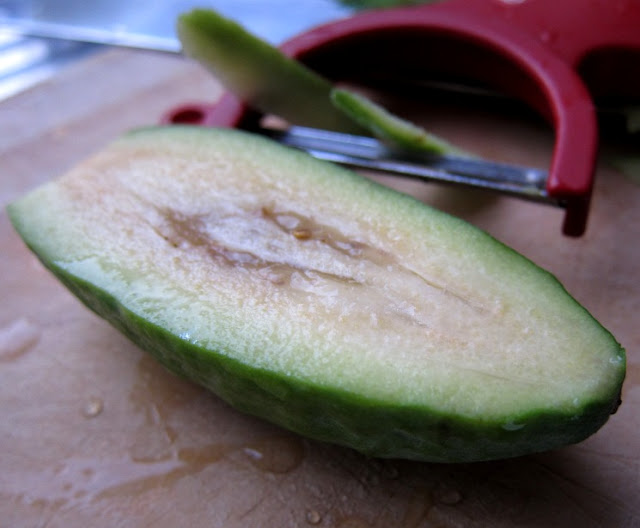 |
| Grove & Vine Providore has a wonderful selection of organic and biodynamic wines from boutique wineries. |
If you adore your reds, whites and everything in between, you'll love Grove & Vine Providore, located on 3/9 Yarra St, South Yarra, with their beautiful selection of fine wines from boutique, organic and biodynamic wineries lovingly hand-picked by owners Roger and Sherri. If you're not crazy about wines, however, you're still likely to be unexpectedly charmed by Grove & Vine - as I was.
I was alerted to Grove & Vine's wine tasting event on first on Twitter, then on Facebook and finally, on the day itself, while accompanying my cousin Daniel to a rental property inspection at Yarra Street, lo and behold, what do I spy but no other than an advertisement for the wine tasting perched on the reception desk in the foyer of the apartment building. The stars are aligned, and they are most definitely urging me to take a good look at Grove & Vine!
I'll have to confess I don't know a great deal about wine, and only drink it occasionally. I do come across a bottle I enjoy immensely every now and then, but generally, I don't see it as much of a priority in my dining experiences. Sacrilegious, I know.
 |
| Jars of jams and sauces at the food section of Grove & Vine Providore. |
So when I first walked into Grove & Vine I was probably more taken in by the lovely gourmet produce they stocked. Teas, jams, chocolates, biscuits, cheeses... quantity there may not be, but every single item looked enticing. You'll find nothing but quality here, and what's more, they're affordable too - for example, a bottle of Maggie Beer verjuice was under $12, which I find to be quite a competitive price.
 |
| More gourmet produce at Grove & Vine Providore. |
But of course, you can't visit Grove & Vine and bypass those wines. Daniel and I couldn't linger long as he had an appointment elsewhere, but we did manage to sample a few of the beautiful biodynamic wines available for tasting that evening, with guidance from the lovely Sherri (who's familiar with my blog, yay!) - and we found ourselves enjoying all of them. In fact, I fell in love with one in particular, the Krinklewood Lucia dessert wine. I took a sip and the sweet, clean flavours of apricot and peach just bowled me over. It was just so fresh... so smooth... so pretty. Perfect for a romantic night in, or anytime, really. I was sold, and happily bought a bottle to enjoy at Simon's place...
 |
| My gorgeous bottle of Krinklewood Lucia dessert wine. Exquisite. |
I've always felt a little lost when buying wine at bottle shops or ordering wine at restaurants. However, Grove & Vine has opened up a whole new world of wines to me, and with their help, I think I can get used to this world. Oh, yes. I can get used to it very well indeed...
Click here to read the rest of the post!











